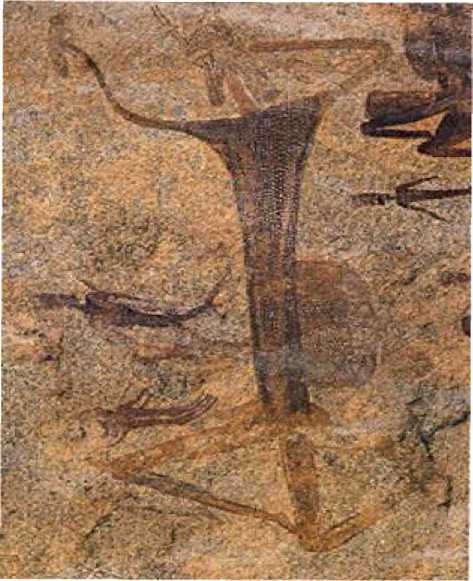In the western regions of the plateau and adjoining Kalahari sandveld, sheep, goats, and cattle were known earlier than the permanent settlements associated with the first crop farmers, and have been recovered in some later Holocene forager-hunter contexts. They date 2000-3000 years ago and, given the absence of their wild prototypes, may have been introduced in the region from further north.
Events associated with early pastoral societies in the region are attributed to ancestral San and Khoekhoen communities, whose languages are related to those of some hunter-forager groups in eastern Africa. The spread of their language and other aspects of culture are, however, still in dispute. The archaeological horizons of sites with Bambata pottery have no signs of

Figure 2 Late Stone Age rock art from Diana’s Vow, in eastern Zimbabwe. The painting depicts a Shaman in trance. Photo: P Taruvinga. (National Museums and Monuments of Zimbabwe).
Experimentation like those in northern parts of the continent. Presumably, processes of complex interaction and shifting identities between resident hunter-foragers and pastoralists and hunter-herders have formed the archaeological record that we see. The depiction of domestic animals on rock art not only attests to some of these events, but also signifies their importance in early pastoral economies (see Animal Domestication).




 World History
World History


![The General Who Never Lost a Battle [History of the Second World War 29]](https://www.worldhistory.biz/uploads/posts/2015-05/1432581983_1425486253_part-29.jpeg)






